

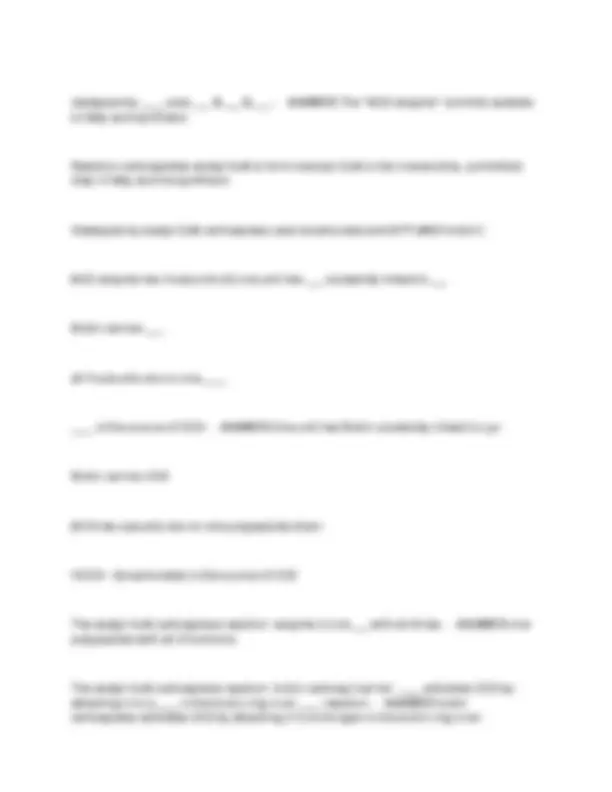
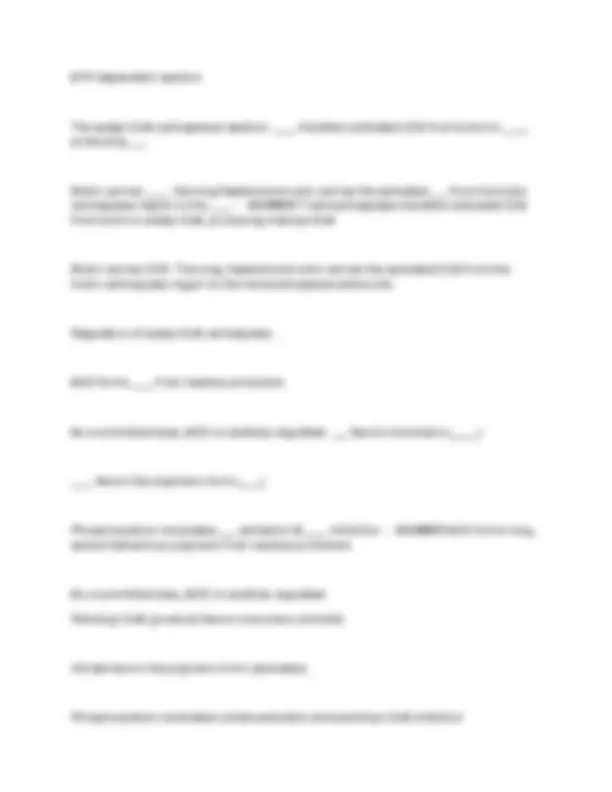
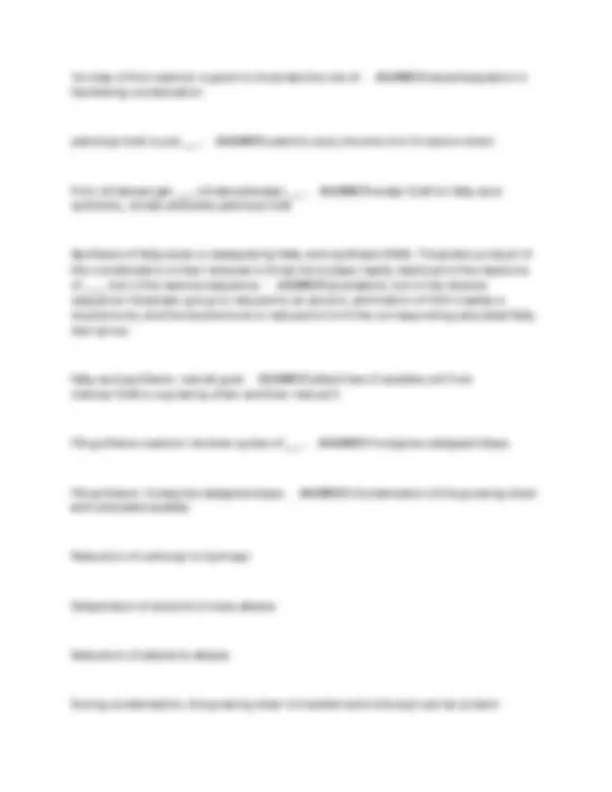
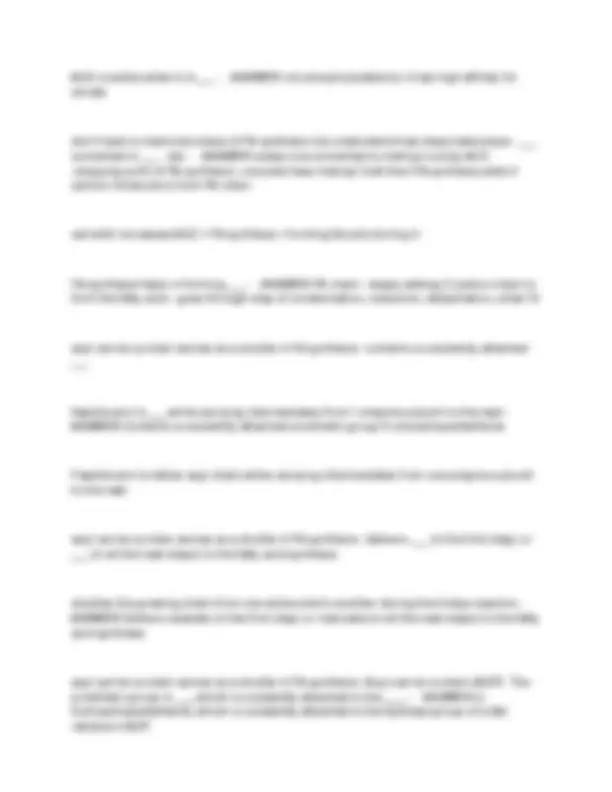
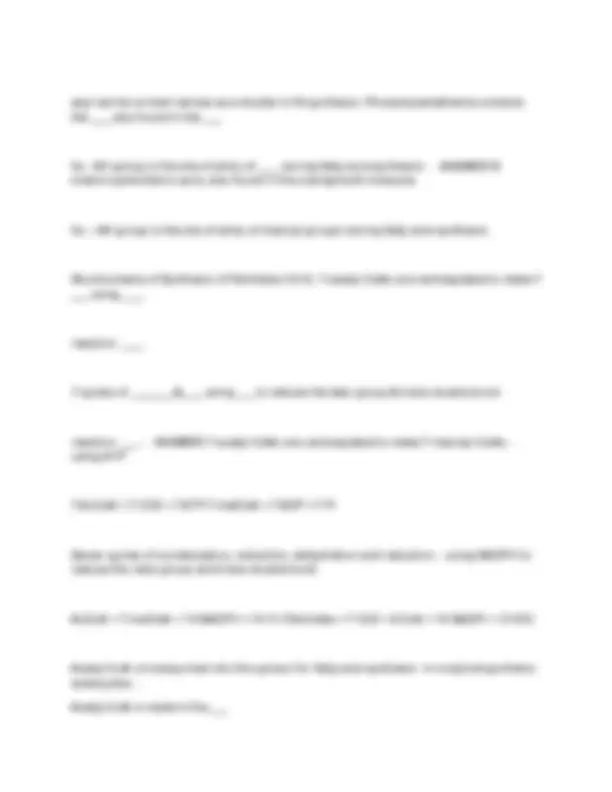

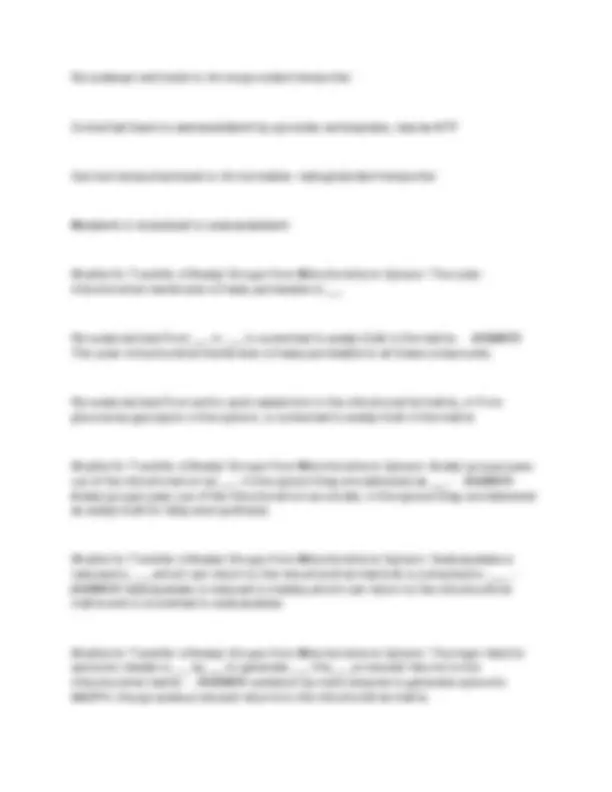
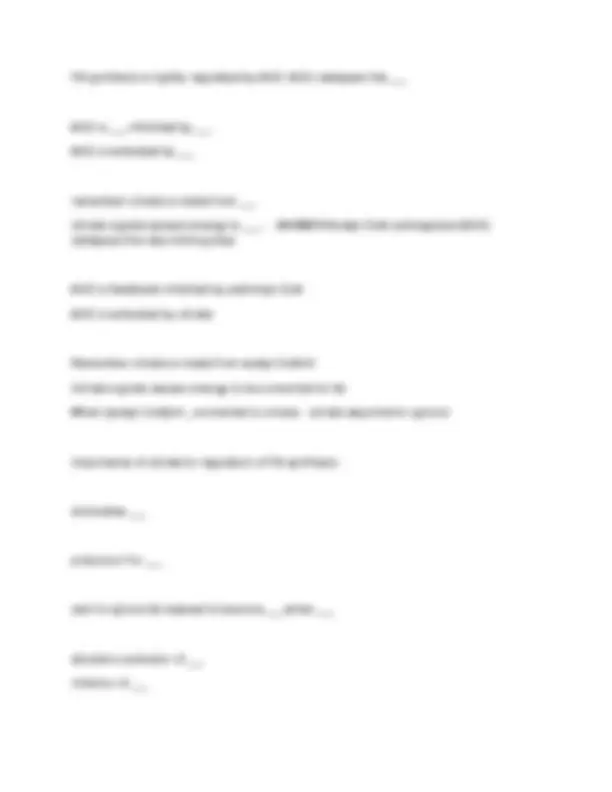
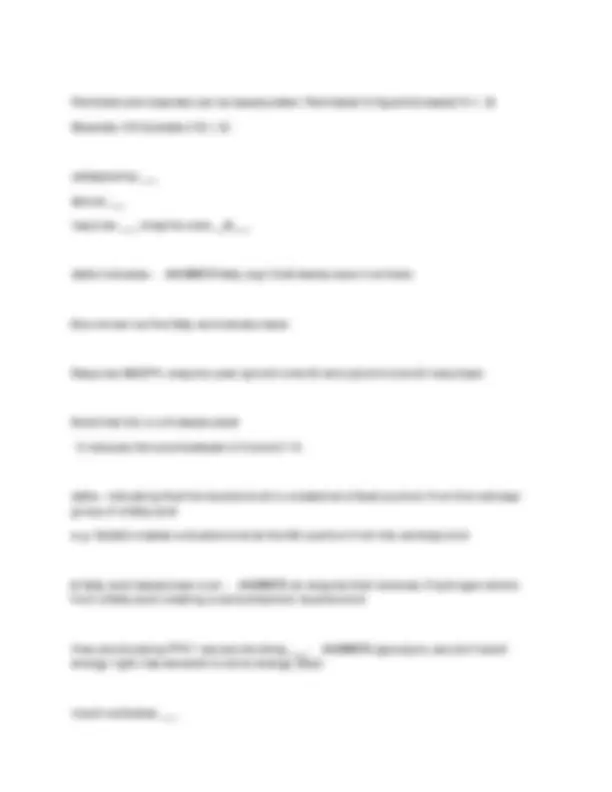

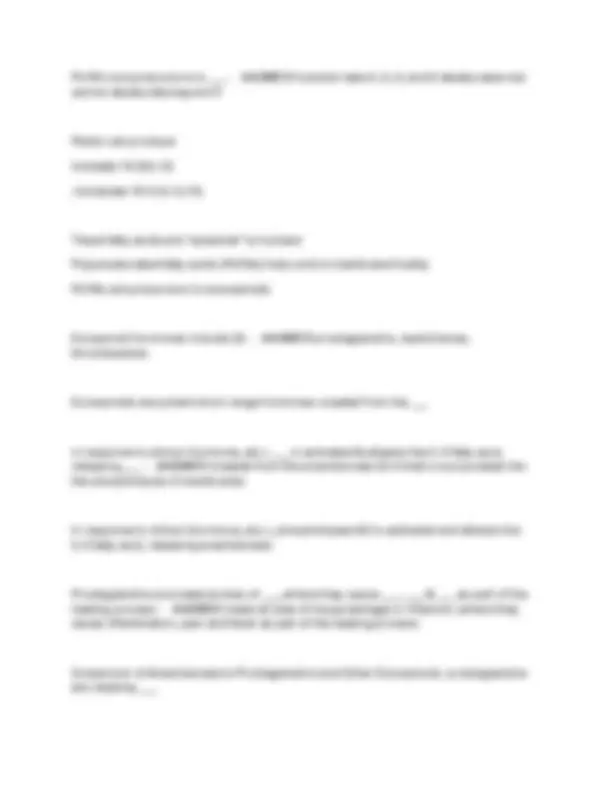
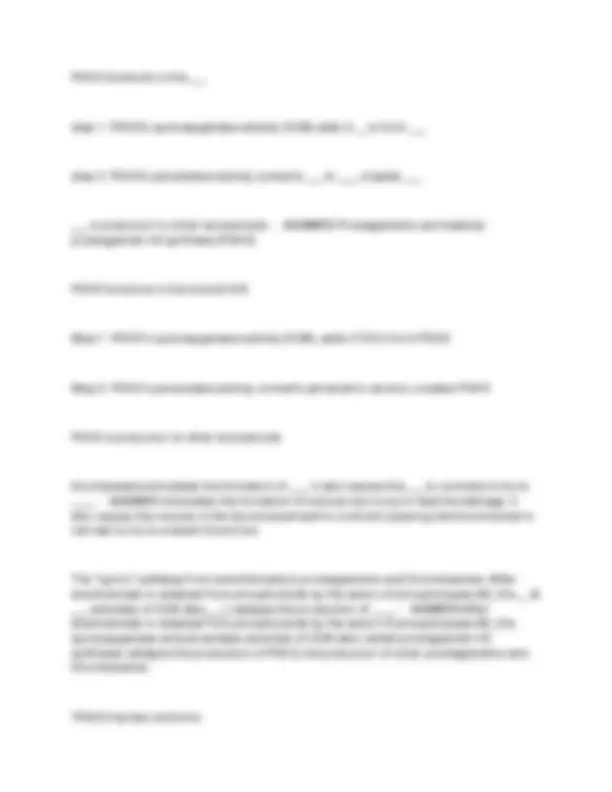

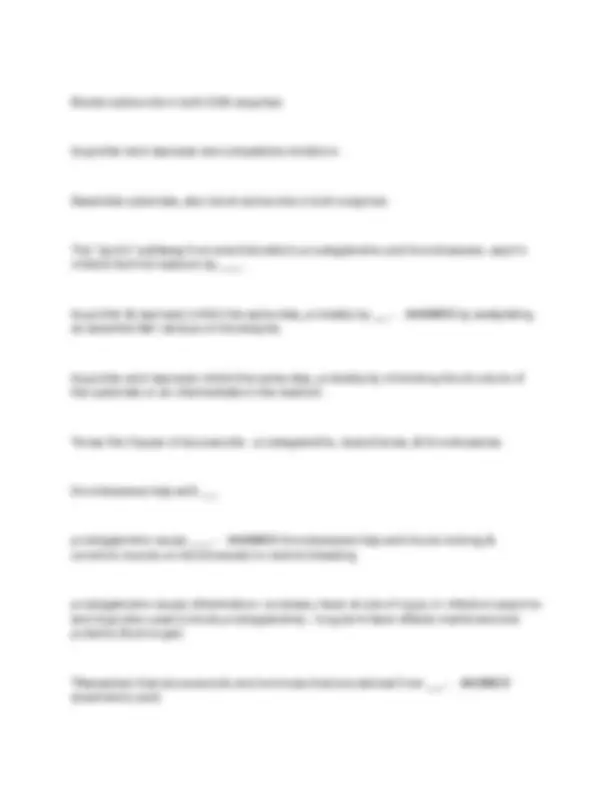
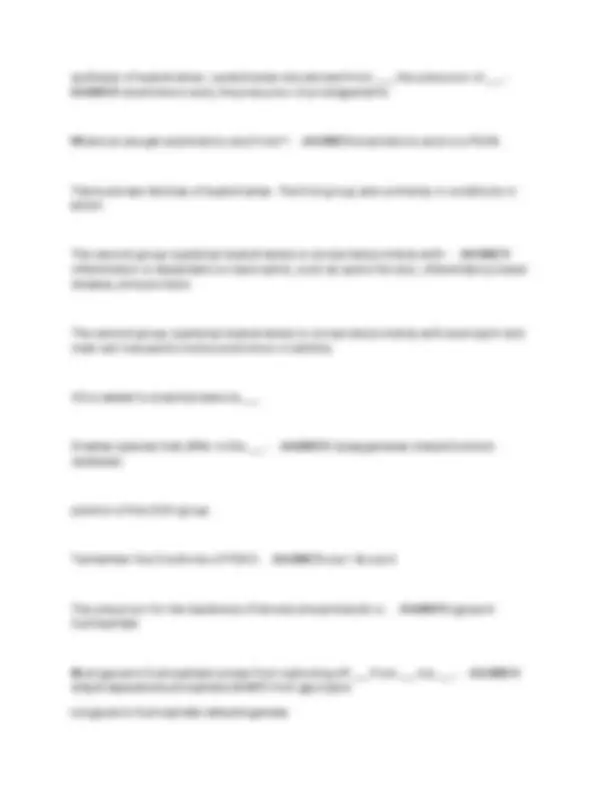

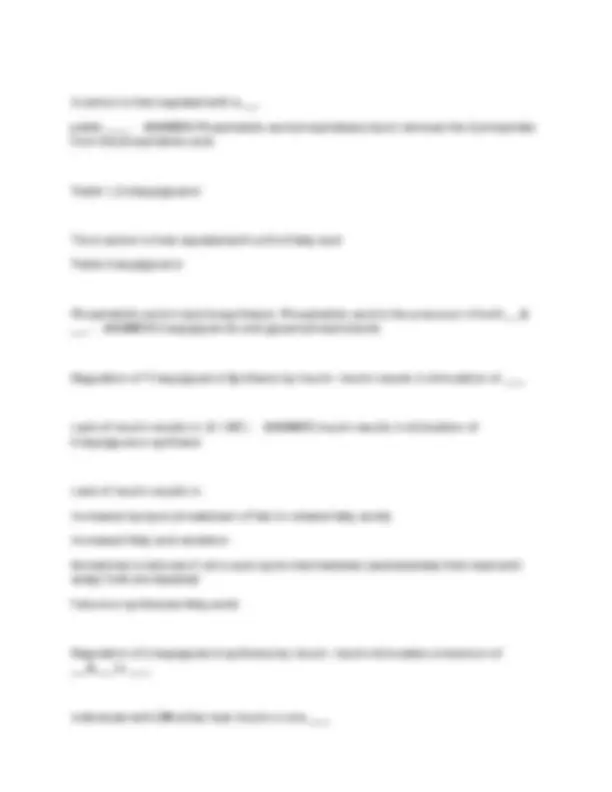
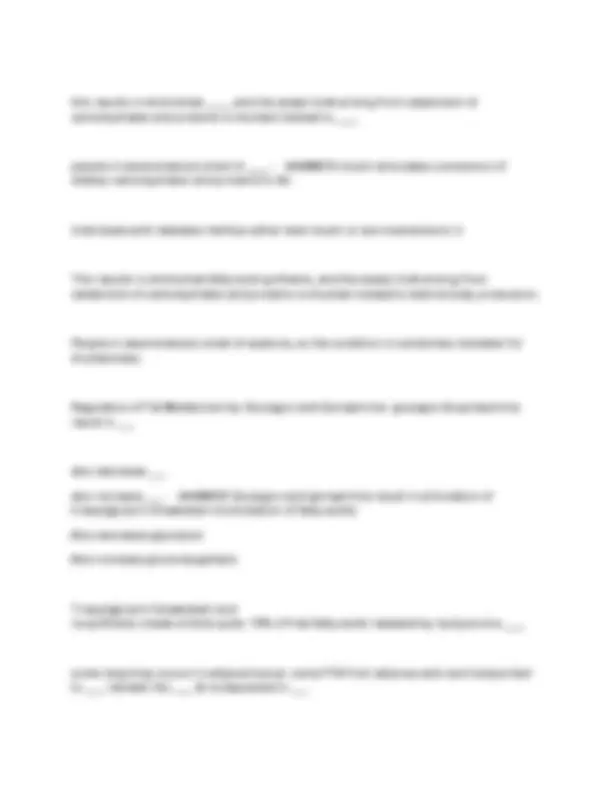
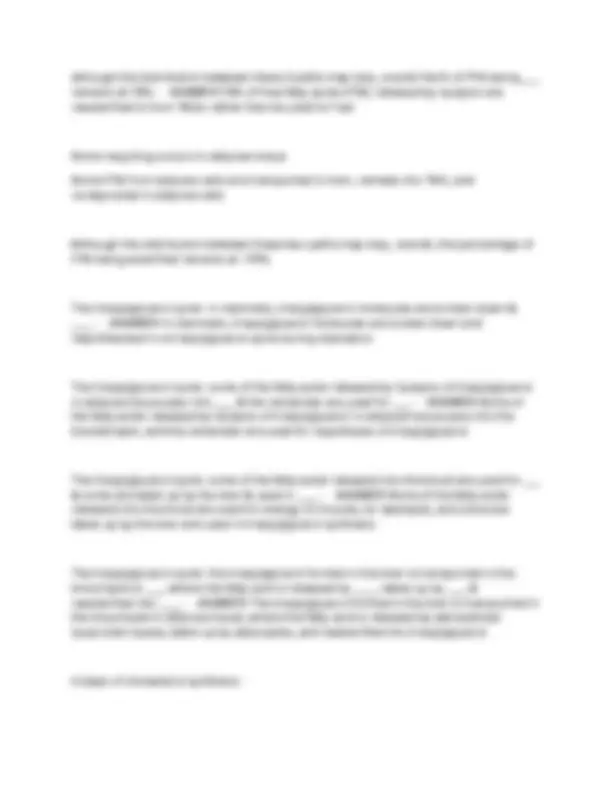

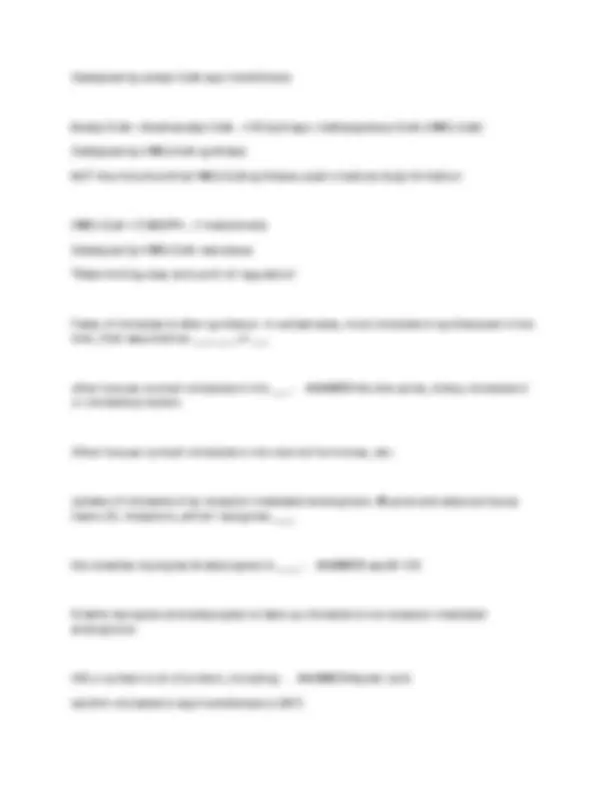

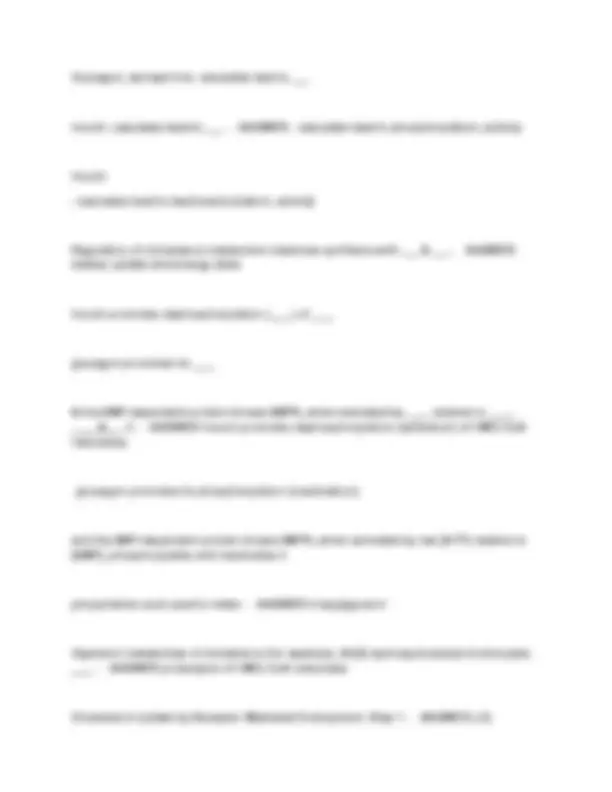



Study with the several resources on Docsity

Earn points by helping other students or get them with a premium plan


Prepare for your exams
Study with the several resources on Docsity

Earn points to download
Earn points by helping other students or get them with a premium plan
Community
Ask the community for help and clear up your study doubts
Discover the best universities in your country according to Docsity users
Free resources
Download our free guides on studying techniques, anxiety management strategies, and thesis advice from Docsity tutors
A detailed explanation of lipid biosynthesis, covering key concepts, mechanisms, and regulatory processes. It includes a series of questions and answers, making it an excellent resource for students preparing for exams. The synthesis of fatty acids, the role of acetyl-coa carboxylase, and the function of fatty acid synthase. It also delves into the regulation of lipid biosynthesis and the importance of various enzymes involved in the process.
Typology: Exams
1 / 33

This page cannot be seen from the preview
Don't miss anything!


























Catabolism of fatty acids: 5 produces ____ produces ____ takes place in the ____ intermediates are liked to ___ groups of CoA enzymes of catabolism are ____ - ANSWER produces acetyl-CoA produces reducing power (NADH) takes place in the mitochondria Intermediates are linked to -SH groups of CoA Enzymes of catabolism are many polypeptides acetyl coa carboxylase enzyme converts acetyl coa to malonyl coa- then go to processof fatty acid synthesis - once we make malonyl CoA fatty acid synthesis will take place - committed step, irreversible - ANSWER
Anabolism of fatty acids: 5 requires ___ & ____ requires ____ from ____ takes place in ____ intermediates are linked to ___ groups of acyl carrier proteins enzymes of synthesis are ___ ____ - ANSWER requires acetyl-CoA and malonyl-CoA requires reducing power from NADPH takes place in cytosol in animals Intermediates are linked to -SH groups of acyl carrier proteins Enzymes of synthesis are one polypeptide Fatty acid synthesis takes place in the compartment in which ____ is available forreductive synthesis (i.e., where the ____ ratio is high);
this is the ____ in animals and yeast, and the ____ in plants -available for reductive synthesis (i.e., where the [NADPH]/[NADP+] ratio is high); ANSWER NADPH is
this is the cytosol in animals and yeast, and the chloroplast in plants
catalyzed by ____ uses ___ & ___ & ___ -to fatty acid synthesis ANSWER The "ACC enzyme" commits acetate
Reaction carboxylates acetyl CoA to form malonyl-CoA is the irreversible, committedstep in fatty acid biosynthesis
Catalyzed by acetyl-CoA carboxylase uses bicarbonate and ATP (AND biotin!) ACC enzyme has 3 subunits (4) one unit has ___ covalently linked to ___ Biotin carries ___ all 3 subunits are on one ____ ____ is the source of CO2 - ANSWER One unit has Biotin covalently linked to Lys Biotin carries CO All three subunits are on one polypeptide chain HCO3− (bicarbonate) is the source of CO The acetyl-CoA carboxylase reaction: enzyme is one ___ with all three -polypeptide with all 3 functions ANSWER one
The acetyl-CoA carboxylase reaction: biotin carboxyl carrier: ____ activates CO2 byattaching it to a ____ in the biotin ring in an ____ reaction - ANSWER biotin carboxylase-activates CO2 by attaching it to a nitrogen in the biotin ring in an
ATP-dependent reaction The acetyl-CoA carboxylase reaction: ____ transfers activated CO2 from biotin to ____,producing ___
Biotin carries ____: the long flexible biotin arm carries the activated ___ from the biotincarboxylase region to the ____ - ANSWER Transcarboxylase-transfers activated CO from biotin to acetyl-CoA, producing malonyl-CoA Biotin carries CO2 -The long, flexible biotin arm carries the activated CO2 from thebiotin carboxylase region to the transcarboxylase active site.
Regulation of acetyl-CoA carboxylase: ACC forms ____ from inactive protomers As a committed step, ACC is carefully regulated. ___ favors monomers (_____) ____ favors the polymeric form (____) Phosphorylation modulates ___ activation & ____ inhibition -active filamentous polymers from inactive protomers ANSWER ACC forms long,
As a committed step, ACC is carefully regulated Palmitoyl-CoA (product) favors monomers (inhibits) Citrate favors the polymeric form (activates) Phosphorylation modulates citrate activation and palmitoyl-CoA inhibition
In contrast, the phosphorylated enzyme is activated by ____ -phosphorylation. ANSWER
The dephospho form of the enzyme is activated by low [citrate] and inhibited only byhigh levels of fatty acyl-CoA.
In contrast, the phosphorylated enzyme is activated by high levels of citrate. Synthesis of fatty acids is catalyzed by fatty acid synthase (FAS): catalyzes a repeating4-step sequence that ___
uses ___ as the electron donor uses ___ as activating groups -that elongates the fatty acyl chain by two carbons at each step ANSWER Catalyzes a repeating four-step sequence
Uses NADPH as as the electron donorUses two enzyme-bound -SH groups as activating groups
Synthesis of fatty acids is catalyzed by fatty acid synthase (FAS): addition of 2 carbonsto a growing fatty acyl chain: a 4 step sequence. Each ___ group & ___ group is activated by a ___ -by a thioester that links it to fatty acid synthase ANSWER Each malonyl group and acetyl (or longer acyl) group is activated
Synthesis of fatty acids is catalyzed by fatty acid synthase (FAS): condensation of anactivated acyl group (an ____) & 2 carbons derived from ___ with elimination of ___ from the malonyl group, extends the acyl chain by 2 carbons -activated acyl group (an acetyl group from acetyl-CoA is the first acyl group) and two ANSWER Condensation of an carbons derived from malonyl-CoA, with elimination of CO2 from the malonyl group,extends the acyl chain by two carbons.
Synthesis of fatty acids is catalyzed by fatty acid synthase (FAS): the mechanism of the
1st step of this reaction is given to illustrate the role of -facilitating condensation ANSWER decarboxylation in
palmitoyl-CoA is just ___ - ANSWER palmitic acid, the end of a 16 carbon chain from citrate we get ___, citrate activates ___ -synthesis, citrate activates palmitoyl CoA ANSWER acetyl CoA for fatty acid
Synthesis of fatty acids is catalyzed by fatty acid synthase (FAS): Thethis condensation is then reduced in three more steps nearly identical to the reactions β-keto product of of ____ but in the reverse sequence: -sequence: the β-keto group is reduced to an alcohol, elimination of H2O creates a ANSWER β oxidation, but in the reverse double bond, and the double bond is reduced to form the corresponding saturated fattyacyl group.
fatty acid synthesis: overall goal -malonyl-CoA to a growing chain and then reduce it ANSWER attach two-C acetate unit from
FA synthesis reaction involves cycles of ___ - ANSWER 4 enzyme-catalyzed steps FA synthesis: 4 enzyme-catalyzed steps -with activated acetate ANSWER Condensation of the growing chain
Reduction of carbonyl to hydroxyl Dehydration of alcohol to trans-alkene Reduction of alkene to alkane During condensation, the growing chain is transferred to the acyl carrier protein
acyl carrier protein serves as a shuttle in FA synthesis: Phosphopantetheine containsthe ___, also found in the ___.
Its --SH group is the site of entry of ____ during fatty acid synthesis -vitamin pantothenic acid, also found in the coenzyme A molecule. ANSWER B
Its — SH group is the site of entry of malonyl groups during fatty acid synthesis. Stoichiometry of Synthesis of Palmitate (16:0): 7 acetyl-CoAs are carboxylated to make 7___ using ____
reaction: ____ 7 cycles of ,,,&_, using ___ to reduce the keto group & trans double bond reaction: ___ -using ATP ANSWER 7 acetyl-CoAs are carboxylated to make 7 malonyl-CoAs...
7 AcCoA + 7 CO2 + 7 ATP 7 malCoA + 7 ADP + 7 Pi Seven cycles of condensation, reduction, dehydration and reduction...using NADPH toreduce the -keto group and trans-double bond
AcCoA + 7 malCoA + 14 NADPH + 14 H+ Palmitate + 7 CO2 + 8 CoA + 14 NADP+ + 6 H2O Acetyl-CoA is transported into the cytosol for fatty acid synthesis: In nonphotosyntheticeukaryotes... Acetyl-CoA is made in the ___
But fatty acids are made in the ___ so acetyl-CoA is transported into the cytosol with a cost of ___ therefore, cost of FA synthesis is ____ per 2-C unit -mitochondria ANSWER Acetyl-CoA is made in the But fatty acids are made in the cytosol So Acetyl-CoA is transported into the cytosol with a cost of 2 ATPs Therefore, cost of FA synthesis is 3 ATPs per 2-C unit Fatty acid synthesis occurs in cell compartments where NADPH levels are high: ___ foranimals - ANSWER Cytosol for animals
Sources of NADPH: -enzyme ANSWER In adipocytes: pentose phosphate pathway and malic
NADPH made as malate converts to &_ in hepatocytes & mammary gland: ____ -pyruvate + CO2 ANSWER NADPH made as malate converts to In hepatocytes and mammary gland: pentose phosphate pathway NADPH made as glucose-6-phosphate converts to ___ in plants: ___ -6-phosphate ANSWER NADPH made as glucose-6-phosphate converts to ribulose In plants: photosynthesis
Rx requires ___ acetyl-CoA can now be used for ___ -citrate lyase ANSWER Citrate (now in cytosol) is cleaved by
Regenerates acetyl-CoA and oxaloacetate Rx requires ATP Acetyl-CoA can now be used for lipid synthesis Malate dehydrogenase in cytosol reduces __ to ___ - ANSWER oxaloacetate to malate oxaloactete cyt is converted to malate: 2 potential fates for malate: can be converted to__ & ___ via the ___
NADPH used for ___ Pyruvatecyt sent back to __ via ___converted back to ___ can be transported by to __ via ___ Malatemt is reoxidizes to __ -pyruvatecyt via the malic enzyme ANSWER Can be converted to NADPHcyt and
NADPH used for lipid synthesis
Pyruvatecyt sent back to mt via pyruvate transporter Converted back to oxaloacetatemt by pyruvate carboxylase, reqires ATP Can be transported back to mt via malate --ketoglutarate transporter Malatemt is reoxidized to oxaloacetatemt Shuttle for Transfer of Acetyl Groups from Mitochondria to Cytosol: The outermitochondrial membrane is freely permeable to ___
Pyruvate derived from ___ or ___ is converted to acetyl-CoA in the matrix -The outer mitochondrial membrane is freely permeable to all these compounds. ANSWER
Pyruvate derived from amino acid catabolism in the mitochondrial matrix, or fromglucose by glycolysis in the cytosol, is converted to acetyl-CoA in the matrix
Shuttle for Transfer of Acetyl Groups from Mitochondria to Cytosol: Acetyl groups passout of the mitochondrion as ___; in the cytosol they are delivered as ___ - ANSWER Acetyl groups pass out of the mitochondrion as citrate; in the cytosol they are deliveredas acetyl-CoA for fatty acid synthesis.
Shuttle for Transfer of Acetyl Groups from Mitochondria to Cytosol: Oxaloacetate isreduced to ___, which can return to the mitochondrial matrix & is converted to ____ - ANSWER Oxaloacetate is reduced to malate, which can return to the mitochondrialmatrix and is converted to oxaloacetate.
Shuttle for Transfer of Acetyl Groups from Mitochondria to Cytosol: The major fate forcytosolic malate is ___ by ___ to generate ___; the ___ produced returns to the mitochondrial matrix -NADPH; the pyruvate produced returns to the mitochondrial matrix. ANSWER oxidation by malic enzyme to generate cytosolic
reduces ____ - ANSWER In animals, citrate stimulates fatty acid synthesis! Precursor for acetyl-CoA Sent to cytosol and cleaved to become AcCoA when AcCoA and ATP (energy excess) Allosteric activator of ACC Inhibitor of PFK- Reduces glycolysis ACC is also regulated by covalent modification: inhibited when ___ glucagon & epinephrine: reduce sensitivity of ___, lead to & ACC is active as ___ when dephosphorylated, ACC ____phosphorylation reverses ___ - ANSWER Inhibited when energy is needed
Glucagon and epinephrine:reduce sensitivity of citrate activation lead to phosphorylation and inactivation of ACC ACC is active as dephosphorylated monomers When dephosphorylated, ACC polymerizes into long inactive filamentsPhosphorylation reverses the polymerization
Regulation of FA synthesis: In the cells of vertebrates, both __ & ___ influence the flow ofprecursors into ___
in plants, ACC is activated by the changes in & that accompany illumination -ANSWER both allosteric regulation and hormone-dependent covalent modification influence the flow of precursors into malonyl-CoA. In plants, acetyl-CoA carboxylase is activated by the changes in [Mg2+] and pH thataccompany illumination
Additional modes of regulation in FA synthesis: changes in gene expression &reciprocal regulation - ANSWER Changes in gene expression Example: Fatty acids (and eicosanoids) bind to transcription factors called PeroxisomeProliferator-Activated Receptors (PPARS)
Reciprocal regulation -Malonyl-CoA inhibits fatty acid import into mt-One of many ways to ensure that fat synthesis and oxidation don't occur simultaneously
Palmitate can be lengthened to longer-chain fatty acids: elongation systems in the__&___ create longer fatty acids
as in palmitate synthesis, each step adds ___ ____ is the most common product -reticulum and mitochondria create longer fatty acids ANSWER Elongation systems in the endoplasmic
As in palmitate synthesis, each step adds units of 2 C Stearate (18:0) is the most common product
any thing breaking down glycogen or fat will always be & -enzyme to do with synthesis insulin will activate it ANSWER ACC, any
glucagon & epinephrine mt = - ANSWER mitochondria FA synthesis takes place in ___ - ANSWER cytoplasm bc NADPH everything is regulated at ___ bc ___ , if we form malonyl coA ___ will NOT take place, only ____ -committed step ANSWER ACC bc that is the
FA oxidation will NOT take place, only FA synthesis elongation process is known as ___ remember fatty acyl-CoA desaturase - enzyme involved in elongating FA -desaturation ANSWER
Humans have 4, 5, 6, and 9 desaturases but cannot desaturate beyond ___ plants can produce & PUFA's help control ____
PUFA's are precursors to ___ -cannot desaturate beyond 9 ANSWER Humans have 4, 5, 6, and 9 desaturases but
Plants can produce: linoleate 18:2(9,12) -linolenate 18:3 (9,12,15) These fatty acids are "essential" to humansPolyunsaturated fatty acids (PUFAs) help control membrane fluidity PUFAs are precursors to eicosanoids Eicosanoid hormones include (3) -thromboxanes ANSWER prostaglandins, leukotrienes,
Eicosanoids are potent short-range hormones created from the ___ in response to stimuli (hormone, etc.) ___ is activated & attacks the C-2 fatty acid,releasing ___ - ANSWER Created from the arachidonate 20:4 that's incorporated into the phospholipids of membranes In response to stimuli (hormone, etc.), phospholipase A2 is activated and attacks theC-2 fatty acid, releasing arachidonate
Prostaglandins are made at sites of ___, where they cause ___, ___, & ___ as part of thehealing process - ANSWER made at sites of tissue damage or infection, where they cause inflammation, pain and fever as part of the healing process. Conversion of Arachidonate to Prostaglandins and Other Eicosanoids: prostaglandinsare made by ___